For much of the year, Kaohsiung’s residents enjoy a sunny climate. When the weather becomes inhospitable, the city’s various museums are a good option.
A ONCE-MIGHTY INDUSTRY
Taiwan’s centuries-old sugar trade entered the industrial era in 1902, when a state-of-the-art sugar-processing facility in what’s now Kaohsiung’s Ciaotou District (橋頭) began operations.
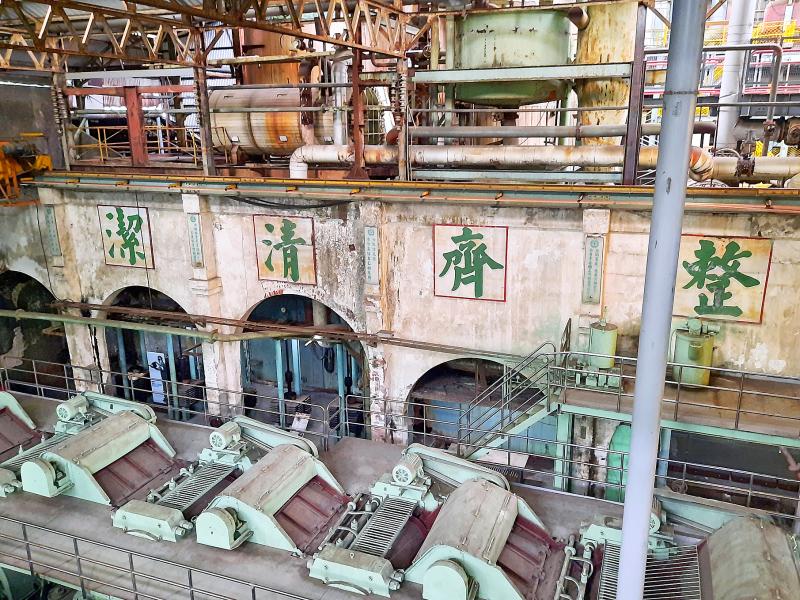
Photo: Steven Crook
This 20-hectare complex hasn’t produced any sugar since 1999, but it remains largely intact. Renamed the Taiwan Sugar Museum (台灣糖業博物館), it preserves not only various buildings but also agricultural machinery and several narrow-gauge locomotives.
Near the sidings where the rolling stock is kept, a former warehouse contains several exhibits.
This isn’t Taiwan’s only sugar-themed exhibition hall. Inside Shanhua Sugar Factory (善化糖廠) in Tainan, Shanhua Sugar Museum (善糖文物館) contains some interesting photos and preserves some worthwhile objects. Tangbu Cultural Park (臺北製糖所) in Taipei’s Wanhua District (萬華) provides a good bit of information, albeit in Chinese.
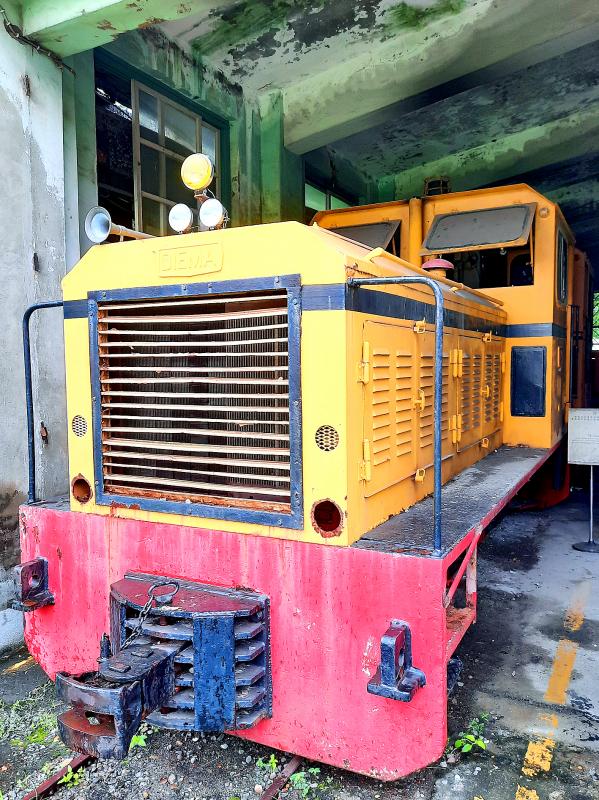
Photo: Steven Crook
But looking around the leaky building that hold Ciaotou’s collection of models, tools and photographs, it occurred to me that — despite sugar’s central role in Taiwan’s economic development — the industry still hasn’t been given the museum it deserves.
Ciaotou’s dormant sugar factory is far more intriguing. There are three entrances, and it seems members of the public can explore unsupervised, despite the huge amount of heavy machinery inside and walls that are shedding plaster.
The labeling is haphazard; those depending on English won’t learn much at all. It wasn’t clear to me which parts of the factory are off-limits to outsiders. During my visit, at least two stray dogs were sheltering inside.
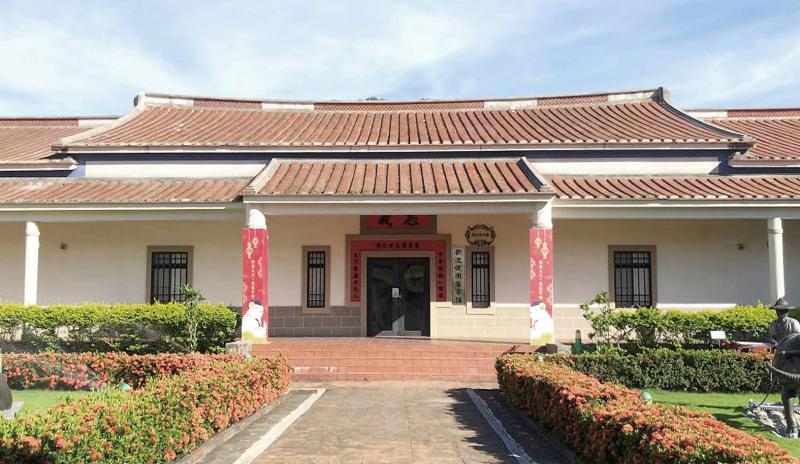
Photo: Courtesy of Hakka Affairs Commission, Kaohsiung City Government
Despite these defects of presentation, I found the interior quite striking. If post-apocalypse or industrial-heritage aesthetics appeal to you, you’ll want to spend at least an hour here.
Directions
Taking Kaohsiung Metro’s Red Line to Ciaotou Sugar Refinery Station (橋頭糖廠站) will get you marginally closer than taking a local train to Ciaotou TRA Station. If you arrive by train, look for Exit 1 of the integrated metro station, then walk south until you come to the entrance to the refinery complex. The site is open between 9am and 4.30pm daily.
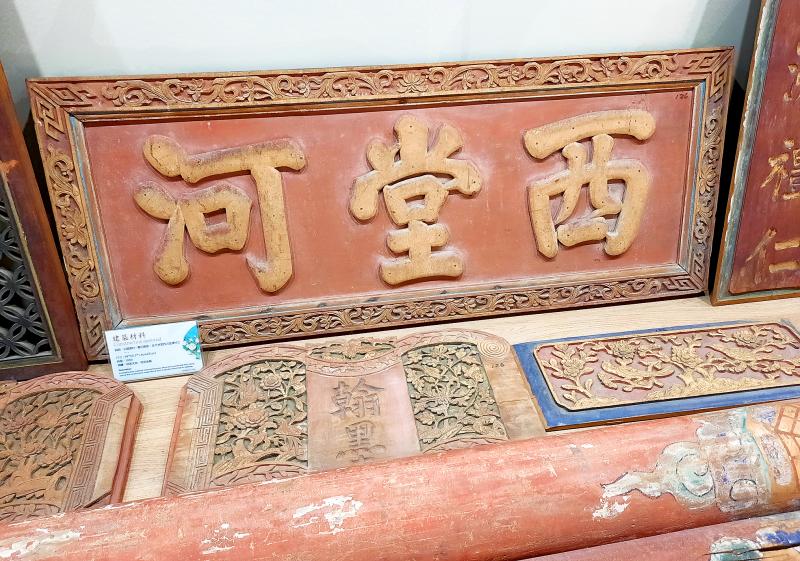
Photo: Steven Crook
INTERNAL MIGRATION
The industrialization of Kaohsiung created job opportunities that inspired waves of Taiwanese to relocate from the rural interior to the big city. Among these migrants were Hakka people from hinterland townships such as Meinong (美濃).
But instead of examining the lives they led after they moved into the metropolis, Kaohsiung Hakka Cultural Museum (高雄市客家文物館) celebrates the minority’s agrarian past.
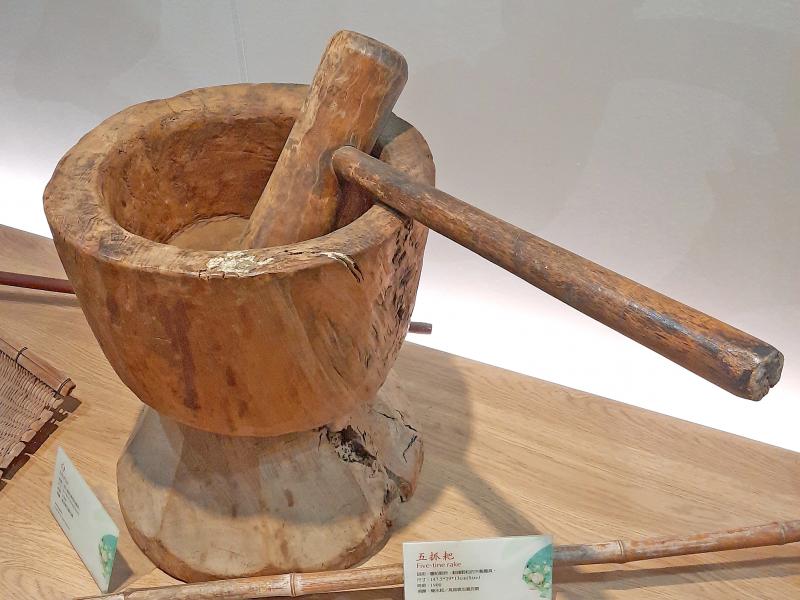
Photo: Steven Crook
There’s a comprehensive collection of farm implements — several of which are in superb condition, despite being up to 120 years old — and a good amount of bilingual information about marriage and religious rituals. Most photogenic of all are the gorgeous woodcarvings that were saved when a 115-year-old Hakka abode in Pingtung County was demolished in 1995.
The museum also features an explanation of what it calls (in English) “the five accents of the Hakka dialect.” Some might argue that these variations should be described as distinct dialects, rather than mere accents.
The replica word-worshipping furnace (敬字亭) illustrates a tradition that was once common throughout Han Chinese communities, but which Hakka villages observed with particular zeal.
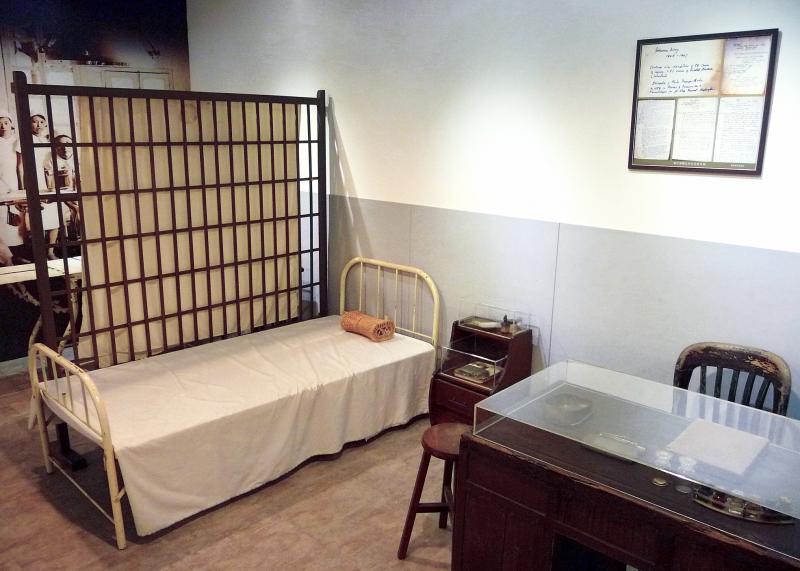
Photo: Steven Crook
So profound was the respect for literacy and scholarship that all papers on which words were written or printed were treated with special reverence. Rather than dispose of them with regular trash, they were ceremonially burned in dedicated furnaces like this one. This custom might have died out, but Taiwanese Hakka continue to be academic overachievers.
Directions
The museum is at 215 Tongmeng 2nd Road (同盟二路), 1km from Exit 4 of Houyi Metro Station (捷運後驛站) on the Red Line. Getting any closer by public transportation is difficult, so expect to stretch your legs or pay for a taxi. The museum is open Tuesday to Sunday, 9am to 5pm. Admission is free.
MEDICAL PROGRESS
Before the arrival of Western physicians in the second half of the 19th century, those who fell sick in Kaohsiung (then known as Dagou, 打狗) depended on faith healing and herbalists.
The Museum of Kaohsiung Medical University Historical Archives and Southern Taiwan Medical History (MKMU, 高醫校史暨南臺灣醫療史料館) celebrates the achievements of healthcare pioneers in that era and more recently. Among them are Sir Patrick Manson (who made a breakthrough critical to the understanding and treatment of malaria) and James Laidlaw Maxwell (founder of Tainan’s Sin-Lau Hospital, 新樓醫院).
Kaohsiung’s first modern hospital was founded in 1879 and named for Manson’s younger brother, David, who’d died in Fujian the previous year. Located in what’s now Cijin District (旗津), this long-gone facility treated local patients as well as expatriate traders and Christian missionaries.
Part of the first floor in MKMU recreates one of the hospital’s consulting rooms. Also displayed are medical instruments and documents.
Among the “30 Role Models in Medicine in Taiwan” profiled on the second floor are dentists, midwives and researchers as well as doctors.
Those fascinated by languages and how they’re written will find a book exhibited in MKMU particularly interesting. The Principles and Practices of Nursing is a 675-page textbook written just over a century ago by Canadian medical missionary George Gushue-Taylor with the assistance of his wife, Margery. The book, which was reprinted several times before the end of Japanese rule in 1945, is in a Latin orthography used to write various forms of Hokkien, including Taiwanese.
Directions
MKMU is in the eastern part of Kaohsiung Medical University’s campus, just under 1km from Exit 2 of Houyi Metro Station. Bus services which stop nearby include Red 30 and Red 31. The museum is open from 10am to midday and from 1:30pm to 5:30pm every weekday. Admission is free, yet access may not be easy. One security guard told this reporter that only students and employees are allowed onto the campus due to COVID-19 countermeasures, but another raised no objections.
Steven Crook has been writing about travel, culture and business in Taiwan since 1996. He is the author of Taiwan: The Bradt Travel Guide and co-author of A Culinary History of Taipei: Beyond Pork and Ponlai.

In the next few months tough decisions will need to be made by the Taiwan People’s Party (TPP) and their pan-blue allies in the Chinese Nationalist Party (KMT). It will reveal just how real their alliance is with actual power at stake. Party founder Ko Wen-je (柯文哲) faced these tough questions, which we explored in part one of this series, “Ko Wen-je, the KMT’s prickly ally,” (Aug. 16, page 12). Ko was open to cooperation, but on his terms. He openly fretted about being “swallowed up” by the KMT, and was keenly aware of the experience of the People’s First Party

Aug. 25 to Aug. 31 Although Mr. Lin (林) had been married to his Japanese wife for a decade, their union was never legally recognized — and even their daughter was officially deemed illegitimate. During the first half of Japanese rule in Taiwan, only marriages between Japanese men and Taiwanese women were valid, unless the Taiwanese husband formally joined a Japanese household. In 1920, Lin took his frustrations directly to the Ministry of Home Affairs: “Since Japan took possession of Taiwan, we have obeyed the government’s directives and committed ourselves to breaking old Qing-era customs. Yet ... our marriages remain unrecognized,

Not long into Mistress Dispeller, a quietly jaw-dropping new documentary from director Elizabeth Lo, the film’s eponymous character lays out her thesis for ridding marriages of troublesome extra lovers. “When someone becomes a mistress,” she says, “it’s because they feel they don’t deserve complete love. She’s the one who needs our help the most.” Wang Zhenxi, a mistress dispeller based in north-central China’s Henan province, is one of a growing number of self-styled professionals who earn a living by intervening in people’s marriages — to “dispel” them of intruders. “I was looking for a love story set in China,” says Lo,
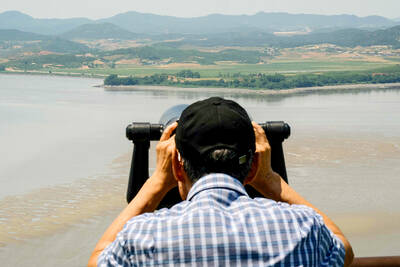
Standing on top of a small mountain, Kim Seung-ho gazes out over an expanse of paddy fields glowing in their autumn gold, the ripening grains swaying gently in the wind. In the distance, North Korea stretches beyond the horizon. “It’s so peaceful,” says the director of the DMZ Ecology Research Institute. “Over there, it used to be an artillery range, but since they stopped firing, the nature has become so beautiful.” The land before him is the demilitarized zone, or DMZ, a strip of land that runs across the Korean peninsula, dividing North and South Korea roughly along the 38th parallel north. This